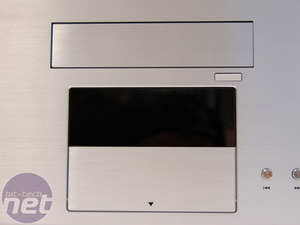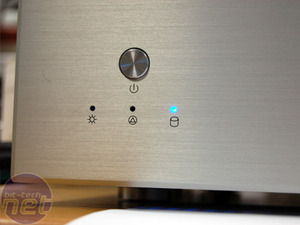
Silverstone LC16M HTPC case
Microsoft Windows Media Center Edition (MCE) has been out for some three years now. The latest version, Update Rollup 2 (codenamed Emerald), is a corker, supporting up to four tuners in a single HTPC, recording of two simultaneous programs, and can pipe media throughout your house via various Media Extenders which now include the Xbox 360.Once upon a time, you could only get MCE by buying a full Media Center PC, which limited its adoption to those with the dough to shell out for an entirely new OEM system. However, these days you can pick up an OEM copy for as little as £80 . This introduces the new and exciting prospect of enjoying the benefits of MCE while using spare hardware you having laying about the house.
Whether you upgrade your existing PC and use current hardware to power your new HTPC, or scour eBay for some extra bits, most people don't want an ugly, beige box as part of their home theatre setup. They want something that looks high-end yet uses their existing hardware, thus avoiding the cost of buying bespoke Media Center system.
Today, we're looking at a case that fits this bill like a glove: the Silverstone LC16M.


At second glance, there is no escaping from the fact that the LC16M is a big case: 425 mm (W) x 170mm (H) x 425 mm (D). It is the size of an old-school desktop case - the kind that used to have a CRT monitor sat on top of it. Visually, it very much apes the look of a beefy separates amp, deliberately so, though this polarised opinions here at the office. Most don't mind the extra bulk, but a vocal minority thought it was "way too big". Think Sophie Dahl versus Anne Widdecombe and you'll get an idea of the argument we had.
This is precisely why we wanted to take a look at it. Those with a big budget are able to buy off-the-shelf full systems, where some of your cash goes towards making the system as compact as possible. The QuietPC D.Vine Media Center is micro-ATX and recently won our Recommended award. Even smaller still is the mini-ITX beblu system we looked at before Christmas. Both are certainly desirable pieces of kit as much for their aesthetics as their performance.
What our esteemed protagonist failed to grasp was that not everyone has the cash to fork out for a sexy low-profile HTPC. The Silverstone LC16M is aimed at an entirely different breed of home theatre enthusiast. Like the Arisetek Accent, this case is for people who want to use regular everyday components. More on that later - let's continue our tour of the external features.


This wasn't helped by the fact that on our sample, there was a cable caught when this bay panel had been installed at the factory. It was easily fixed by removing the mounting screws, freeing the cable and securing the panel back in place, but since this is an upmarket case, this is something customers shouldn't have to do.


To the right is something we haven't seen before: full audio-style control buttons and a large, turned aluminium knob. From a distance, these enhance the amp-like looks, but the manual promises that these functions should have direct control over their respective functions in Windows. Push the knob for mute, and turn for volume control. We can't wait to get it working.

MSI MPG Velox 100R Chassis Review
October 14 2021 | 15:04








Want to comment? Please log in.